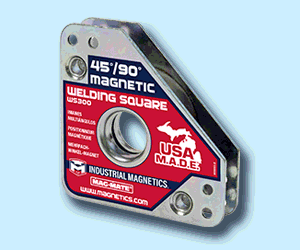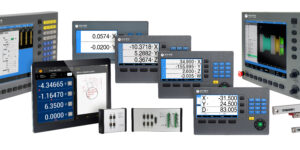Polymer Cable Carriers Take Center Stage In Metalworking
Polymer cable carriers are expanding from traditional machine tool applications into plasma cutting and other fabrication processes. One all-polymer cable-carrier manufacturer, igus® Inc., is leading the way with its own polymer material blend based on polymer-bearing technology.
Posted: November 12, 2013
Many cable and hose carriers are either all plastic, all metal, or hybrids that combine advantages of both materials (usually polymer side plates with steel or aluminum crossbars.) An overriding concern in many applications today is the carrier weight, because heavier systems require more power to move them back and forth. Lightweight plastic carriers are often preferred for energy-efficiency reasons.
One all-polymer cable-carrier manufacturer, igus® Inc. (Providence, RI) has engineered its own polymer material blend based on polymer-bearing technology. It reportedly combines high strength and abrasion resistance, providing excellent life in most applications.
These tougher, stronger, sturdier materials, in conjunction with newer carrier designs, have allowed all polymer carriers to replace hybrid and metal carriers in most applications. Other benefits, in addition to light-weight, include quiet operation, corrosion resistance, and no need for lubrications.
All-plastic-open-style carriers, available in a broad range of sizes and designs, are the first choice for most light to medium-duty applications where high speed and long travel are factors. Snap-together construction simplifies installation and maintenance, and snap-open versions permit quick access to the cable via crossbars anywhere along the carrier. Other versions that permit ready access include open, split, hinged, and zipper designs.
Sizes range from around 0.25 in to units that carry hoses with diameters exceeding four inches. Travel lengths can be more than a quarter mile. Typical uses range from machine tools and industrial robots to pick-and-place and light industrial applications. Travel lengths can be more than a quarter mile. Typical uses range from machine tools and industrial robots to pick-and-place and light industrial applications.
Completely enclosed plastic carriers with a link-type design have an enclosed top and bottom to economically protect hoses and cables in damaging environments. They work well at high speeds and, with proper guiding, can be used for travel lengths of several hundred feet. The enclosure method caries, but several designs allow easy access to cables and hoses with removable slide strips or plates.
Steel is usually the material of choice in heavy-duty applications — those where loads are extreme; with severe shock and vibration; or in hot, aggressive environments such as steel mills and foundries. Surface treatments and hardened pins and plates add to performance. These come in open and closed-link designs, as well as conduit-type carriers formed with small convolutions designed to keep chips, weld spatter, coolant, cutting oil, and similar contaminants away from cables and hoses.
Finally, while most carriers provide linear travel, some equipment — like a 6-axis robot — requires cable support in several directions. Multi-axis cable carriers like igus’s Triflex R product line is essentially a modular “pipeline” that uses ball-and-socket connections between plastic sections to provide multi-axis freedom of movement.
The tubular conduit can twist up to 360 deg per yard and provides the strength needed to support modern cables and hoses without using interior steel-support cables. The smooth outer surface lets it glide over machinery without catching or tangling. The units include integrated supports and brackets and typically ship and install as one piece.
Cable carriers are an integral part of a machine and should be considered early in the design process. Engineers should gather necessary data about the installation including travel length, size and weight of cables and hoses, the operation environment (such as dirt and debris, extreme temperatures, and chemicals), and machine speed acceleration.
Two of the most important design factors are size and strength. To size the carrier, a good rule of thumb is to allow 10 percent clearance around cables and 20 percent clearance around hoses to prevent binding. The resulting dimension is the minimum inner confines of the carrier. In general, fill the carrier cavity no more than 60 percent to prevent damage—over-filling the cavity is probably the most common design mistake.
Design enough free space into the carrier to allow for linear variations, to prevent hose abrasion and ensure safe operation. High-pressure hoses, for example, require special consideration because their length can vary by as much as +2 percent to -4 percent with pressure fluctuations.
However, many carriers are mistakenly selected on size alone. Though it is true that the conduits must have a certain amount of room to move within the carrier, strength is equally important. The carrier must withstand the acceleration forces that the moving mechanism imposes.
Strength-related factors include the total weight of the conduits, including fluid in the hoses; length of run; and maximum acceleration rate. Carrier suppliers can help determine the load limit and select the right carrier. And some major carrier manufacturers offer online tools to aid the process.
igus®, for example, has a product selector that lets users enter data such as space limitations, cable diameters and bending limits, unsupported lengths, the preferred type of design, necessary certifications, and special considerations, such as 3D movement. The program generated a list of appropriate products for the stated application. Related online tools advise users on how to configure and separate hoses and cables; as well as predict the service life of the carrier system based on operating conditions.
Engineers can also make the basic calculations based on: Fa = Wa / 32.17(lb) where Fa is the force needed to accelerate the filled cable carrier from rest, W = weight of carrier and fill (lb), and a = acceleration (ft/sec2 ). Calculate the push force, Fp, needed to move the carrier along its support surface: Fp = μ W (lb) where μ is the coefficient of friction between the carrier and support surface or glide bar. For a plastic carrier sliding on a metal surface μ = 0.5. For plastic surface μ = 0.2.















